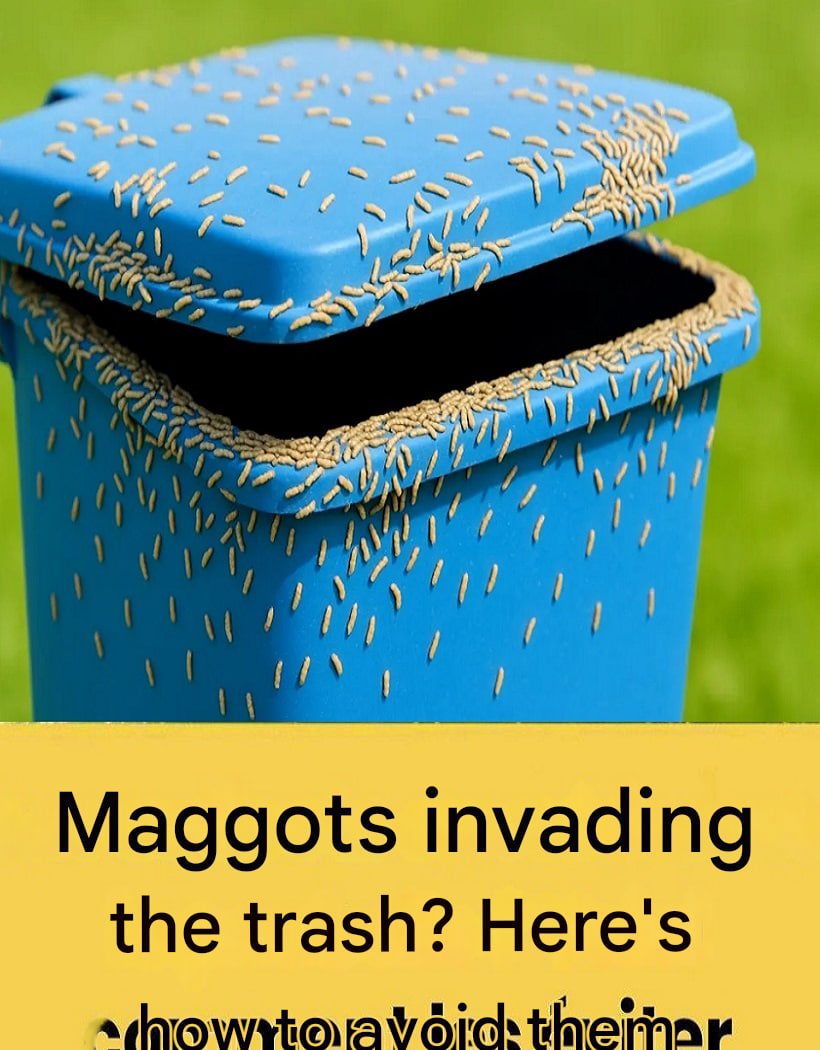Discover the revolutionary methods used by cleaning professionals to permanently eliminate these pests and transform your cleaning routine.
Introduction: The Expensive Summer Invasion
With the arrival of high temperatures , a domestic scourge reappears in our homes: the invasion of maggots in the garbage . This domestic hygiene problem , much more than a simple aesthetic inconvenience, can generate considerable costs in specialized cleaning products and professional disinfection services .
The household cleaning and pest control industry is experiencing a spectacular boom, generating significant advertising revenue on lifestyle platforms and specialist cleaning sites . This seasonal issue is driving substantial investments in cleaning equipment and disinfectant products among households concerned about their sanitary environment .
Home hygiene experts and cleaning specialists are constantly developing new eradication methods that are revolutionizing our approach to trash maintenance . This professional expertise is becoming accessible to individuals through online training and premium guides that transform every home into a true efficient cleaning center .
Understanding the Enemy: Life Cycle and Invasion Strategies
The Proliferation Ecosystem
The appearance of maggots in containers results from a complex biological process that specialized entomologists study to develop targeted eradication strategies . House flies (Musca domestica) identify our garbage cans as optimal breeding sites thanks to their highly developed sense of smell .
These pests detect fermentation fumes from considerable distances, transforming our waste containers into veritable larval nurseries . The egg-laying process can generate up to 150 eggs per female, explaining the rapid proliferation observed during the summer period.
This infestation creates an unsanitary environment that compromises family hygiene and can generate significant health risks . The intervention of pest control professionals sometimes becomes necessary, resulting in intervention costs that can reach several hundred euros.
Favoring Factors and Optimal Conditions
Summer weather conditions create a perfect microclimate for larval development . The combination of heat and humidity accelerates the reproductive cycle , transforming our domestic spaces into risk zones requiring constant health vigilance .
Decomposing organic waste generates volatile compounds that act as real attractive pheromones for egg-laying flies . This natural chemistry explains why some containers become recurring hotbeds of infestation requiring specialized interventions .
Thermal Eradication Methods: Professional Excellence
Premium Thermal Shock Technique
The boiling water method is the standard solution used by sanitation professionals . This thermal eradication technique guarantees 100% effectiveness by instantly destroying larval structures and organic residues responsible for reinfestations .
The application of water at 100°C causes a fatal thermal shock for all stages of pest development . This radical method far surpasses the effectiveness of traditional chemical insecticides , while avoiding the introduction of toxic substances into the domestic environment .
Hygiene specialists recommend the use of appropriate safety equipment : thermal protective gloves , safety glasses and non-slip shoes to prevent domestic accidents during this sanitation procedure .
Enhanced Professional Cleaning Protocol
Adding concentrated detergent to hot water transforms this simple procedure into a true decontamination treatment worthy of professional standards . This chemical-thermal synergy dissolves bacterial biofilms and eliminates protein residues that promote reinfestations .
The use of an industrial cleaning brush allows for effective mechanical stripping of contaminated walls . This controlled abrasive action eliminates encrusted microorganisms and restores the sanitary surface of the container.
Intensive solar drying is the final step in this sanitation protocol . Exposure to UV rays exerts a natural germicidal action that complements thermal disinfection , creating an environment hostile to any recolonization .
Desiccant Solutions: Innovation in Pest Control
Salt Dehydration Technology
The application of sodium chloride (table salt) is a revolutionary eradication method developed by research laboratories specializing in pest control . This osmotic technique causes cellular dehydration that is fatal for larval organisms .
This ecological approach avoids the use of synthetic insecticides that are potentially harmful to the family environment . The low costs of this natural method make it a particularly attractive economic solution for households concerned about their maintenance budget .

